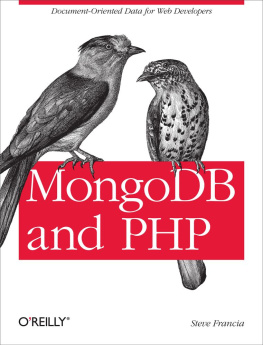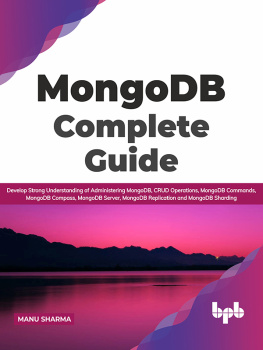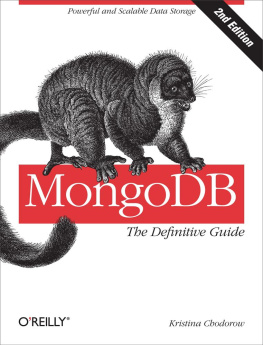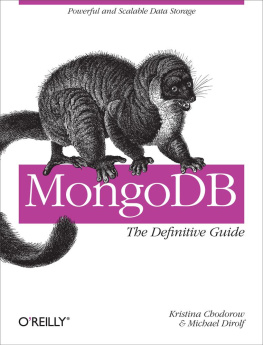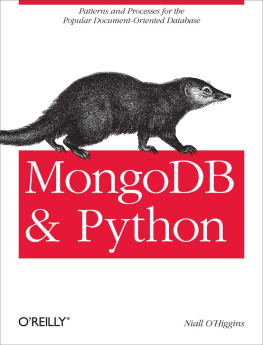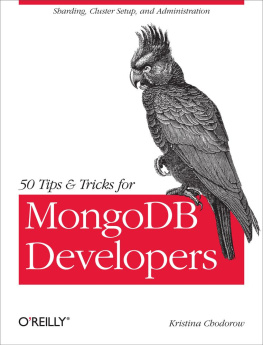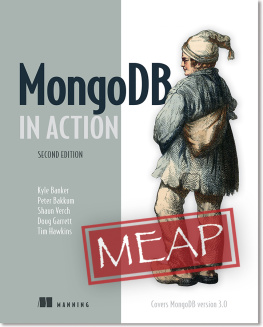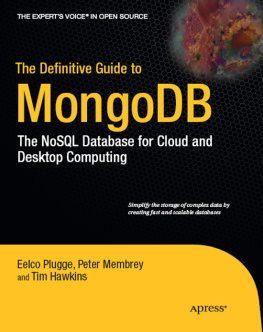Note
Safari Books Online is an on-demand digital library that lets you easily search over 7,500 technology and creative reference books and videos to find the answers you need quickly.
With a subscription, you can read any page and watch any video from our library online. Read books on your cell phone and mobile devices. Access new titles before they are available for print, and get exclusive access to manuscripts in development and post feedback for the authors. Copy and paste code samples, organize your favorites, download chapters, bookmark key sections, create notes, print out pages, and benefit from tons of other time-saving features.
OReilly Media has uploaded this book to the Safari Books Online service. To have full digital access to this book and others on similar topics from OReilly and other publishers, sign up for free at http://my.safaribooksonline.com.
How to Contact Us
Please address comments and questions concerning this book to the publisher:
| OReilly Media, Inc. |
| 1005 Gravenstein Highway North |
| Sebastopol, CA 95472 |
| 800-998-9938 (in the United States or Canada) |
| 707-829-0515 (international or local) |
| 707-829-0104 (fax) |
We have a web page for this book, where we list errata, examples, and any additional information. You can access this page at:
| http://shop.oreilly.com/product/0636920022381.do |
To comment or ask technical questions about this book, send email to:
For more information about our books, courses, conferences, and news, see our website at http://www.oreilly.com.
Find us on Facebook: http://facebook.com/oreilly
Follow us on Twitter: http://twitter.com/oreillymedia
Watch us on YouTube: http://www.youtube.com/oreillymedia
Chapter 1. Why Mongo?
One of the problems that led to the first dot-com crash was the huge expense of development, especially server software. A new and viable set of open source tools emerged from the ashes of the first dot-com and became the foundation for the next generation of the Internet. In the summer of 2001, a new acronym emerged; LAMPLinux, Apache, MySQL and PHPbecame the platform of choice for an entire generation of developers. And like that, PHP and MySQL were married (they were right next to each other, after all). The two seemed destined to go together forever.
The Problem of Objects and Relational Data Structures
There was only one problem. PHPwhich started as a templating languagematured and gradually embraced objects. PHP was being used in more complex applications and the language consistently changed to meet these ever-increasing demands. The practice of writing raw SQL queries in template files quickly became unacceptable (some say it was never acceptable). As the problems became more and more complex, tools were written to solve the constantly growing trouble of PHP using objects (or arrays) and MySQL (and the other relational databases) using tables, rows, and columns.
This isnt a problem specific to PHP. For decades, people have built tools and libraries to automate the process of translating objects to relational data structures. The most popular set is called Object Relational Mappers (ORMs). ORMs were built to solve the problem of SQL. Their sales pitch is: use an ORM because it masks all the nasty details of the datastore, so all you ever need to touch is your friendly PHP objects. Although tools emerged that did a reasonable job of making good on that promise, they never really worked perfectly. First, you always needed to remember that there was a relational database behind these objects that spoke in terms of tables, rows, and columns. Second, these ORMs came at a high cost. They added a lot of complexity and overhead to applications and persisted only a subset of SQLs features. As they developed, it quickly became the case that learning an ORM was far more time-consuming than learning SQL in the first place. It is sufficient to say that although the ORMs largely fixed the problems of SQL, they brought with them the problems of ORMs.

